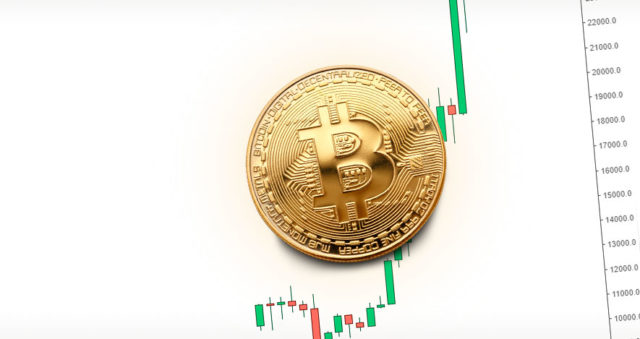At the beginning of the pandemic, much of the western world followed a similar manual for dealing with Covid-19: transmission spikes were countered with lockdowns, and international travel was greatly restricted. While household restrictions are often controversial, hygiene measures such as social distancing, hand washing, and mask use were widely encouraged – and even legally required.
But those days are behind us. Pandemic management now differs greatly from country to country — with the face mask being just one example of the world’s increasingly fragmented approach to Covid-19.
The science behind the use of masks is quite clear and has grown even more robust over the course of the pandemic. Studies show that masks significantly decrease the chances of transmitting the coronavirus, and some types can also help prevent users from contracting the virus.
However, there are still heated discussions in several countries about their use, and some regions have recently removed the rules for people to use them in crowded spaces.
“The masks continue to be a symbol of a divided society, between those who think we’ve restricted too much and those who think we didn’t intervene enough during the pandemic,” said Simon Williams, senior professor of behaviors at Covid-19 at Swansea University , in Wales, to CNN.
With the prospect of another pandemic coming this winter in the northern hemisphere, some countries are facing difficulties in returning to the use of masks. There is resistance from people tired by endless mixed messages. Furthermore, many experts fear that, in countries where the rules have been relaxed, re-enforcement could be complicated.
different approaches
In the first days of the pandemic, there was an initial hesitation about the use of masks by governments and the World Health Organization (WHO) over fears that a race for masks would leave front-line workers without sufficient protective equipment. But as the world learned more about Covid-19, its use became common in the mid-2020s.
“Masks help to filter the aerosols generated in our respiratory tract when we breathe or speak. They are more effective at filtering out larger aerosol particles and less effective at filtering out smaller ones,” said Bryan Bzdek, a researcher at the Center for Aerosol Research at the University of Bristol in England, summarizing the scientific mechanism behind mask use.
“It’s something conceptually similar to driving a car when there are a lot of insects on the road: the big ones tend to hit the windshield, while the small ones follow the airflow around the car”, he compared.
Outside parts of Southeast Asia, where the wearing of masks became popular after the SARS outbreak in 2002, few countries were used to covering their faces in public. But the unparalleled shock of Covid-19 brought about a rapid change in behavior.
“Behavioral scientists and policymakers were very surprised at how quickly people adopted the masks when they were needed,” Williams said.
“The biggest development in the masks’ perceptions of the pandemic has been a general acceptance that they protect others as much, if not more, than the wearer,” he added.
“The exact benefits in terms of cases averted and lives saved are still being studied, but even the marginal gains are worth it, as masks are relatively low-cost interventions as they are much easier for us than things like distancing or isolation”.
However, today, despite the growing volume of scientific research on masks, countries are moving in many directions. In the US, President Joe Biden has made the mask a key pillar of his response to Covid-19. His government followed the guidelines of the Centers for Disease Control and Prevention (CDC) regarding mask recommendations, imposing them inside federal government buildings and encouraging schools to use them.
But he faced obstacles from several states. More recently, Biden’s Department of Education (ministry equivalent) was involved in a battle with the Florida State Department of Education, which decided to cut funding for certain school districts that required people to wear masks.
In Europe, mandatory masks are the norm, even after several countries register fewer cases and hospitalizations, with stricter rules for unvaccinated people who frequent closed spaces such as restaurants and bars.
Spain, for example, requires masks indoors when social distance is not possible. France recently lifted the requirement to wear a mask outdoors, but the rule remains in effect for closed spaces. And Italians are still requiring them indoors and on public transport (the requirement has been dropped for outdoors).
However, England, despite the persistent increase in cases since the middle of the year, no longer requires people to cover their faces anywhere. British Prime Minister Boris Johnson called for “personal choice”.
The psychology of masks
Experts say that the fact that most people wear masks depends largely on the rules in place. “The biggest influence seems to be the law,” said Ivo Vlaev, a professor of behavioral science at the University of Warwick in England. He cited data from Imperial College London’s Covid Behavior Tracker, the largest continuous study of the social impact of Covid-19 in the world.
“Mandatory behavior helps send a signal that it matters,” added Williams, a professor at Swansea. “The wearing of masks is really a behavior influenced by social norms – or peer pressure – and therefore, in an environment where masks are no longer mandatory, it can influence other people not to wear yours.”
“This is pretty clear from the tipping point in the UK when mandatory mask use was announced,” said Professor Vlaev, referring to the rapid increase in mask use last year and an equally sudden drop since July, when the rule has been removed. According to the UK’s Office of National Statistics, nearly one in five Britons no longer say they wear a face shield outside the home, compared with just 4% in mid-June when they were still required to.
But when the public follows the law’s recommendations, unclear messages can be costly.
Professor Williams said he was initially “surprised” at how quickly people stopped wearing masks in the UK in recent months. “It’s something to do with the mixed messages that a lot of people feel the government is sending out,” he added. “Many countries in Europe have a more consistent policy on masks and that makes them a habit over time.”
The British government is now facing a test of trying to encourage the wearing of masks again, without the support of a law, with cases increasing in the period leading up to winter.
UK Health Secretary Sajid Javid recently encouraged people to wear masks in certain situations to avoid future restrictions. But he was forced to admit that it was “fair” for people to wonder why they are now being encouraged to do so, while lawmakers show up in the House of Commons without covering their faces.
Experts doubt that this guidance carries as much weight as it did in the earlier stages of the pandemic.
“As the number of mask wearers declines, the authorities’ ability to enforce this requirement also declines,” said Robert Dingwall, a professor of social science at Nottingham Trent University. in England.
It is this thinking that has led most EU countries to impose longer and sometimes stricter mask-wearing demands.
“People will have learned a new behavior – wearing masks – before ‘unlearning’ it and then having to relearn it,” Williams said. “This can be a challenge as many people may have become accustomed to living without masks again.”
Reference: CNN Brasil







